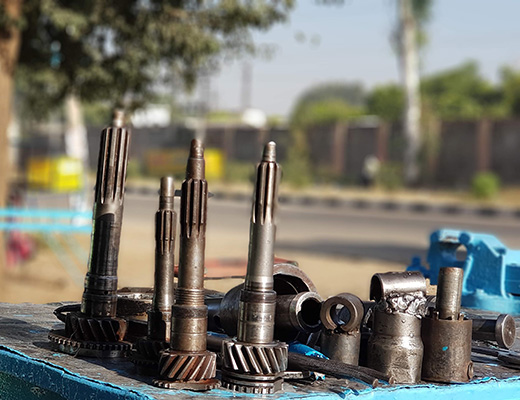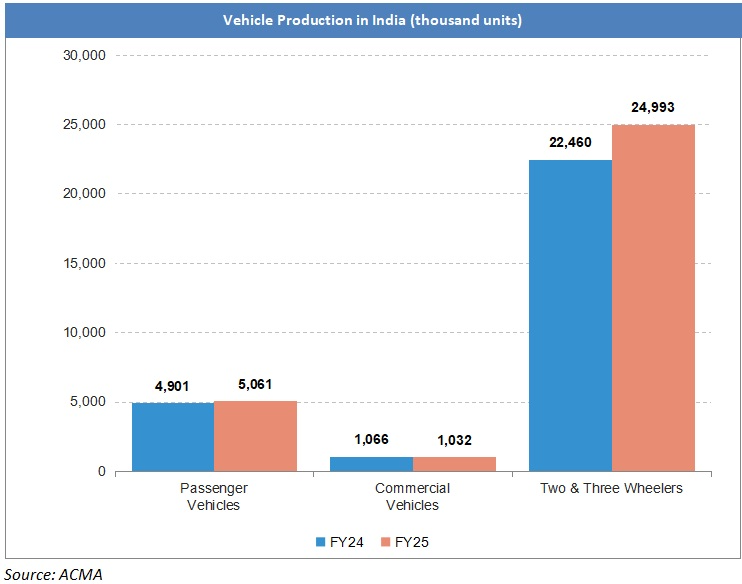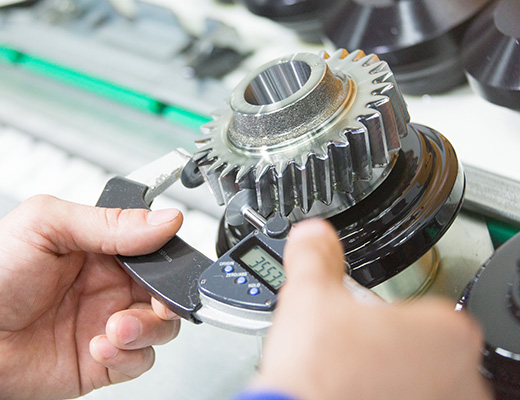Advantage India
Robust
Demand
*Growing working population and expanding middle class are expected to remain the key demand drivers.
*India is the world’s third-largest automobile market by both value and volume.
*By 2030, ten million EVs could be sold each year. The EV market is expected to reach US$ 206 billion by 2030.
*India’s auto component industry is expected to attract Rs. 25,000-30,000 crore (US$ 2.89-3.46 billion) in FY26 for capacity expansion and EV part localisation, following an estimated investment of Rs. 15,000-20,000 crore (US$ 1.73-2.31 billion) in FY25.
Export
Opportunities
*India is emerging as a global hub for auto component sourcing and the industry exports over 25% of its production annually.
*Exports of auto components rose by 8%, reaching Rs. 1,95,726 crore (US$ 22.90 billion) in FY25, up from Rs. 1,81,196 crore (US$ 21.20 billion) in FY24.
*The auto component sector is projected to achieve exports worth Rs. 8,54,700 crore (US$ 100 billion) by 2030.
*By FY28, the Indian auto industry aims to invest Rs. 58,000 crore (US$ 7 billion) to boost localization of advanced components like electric motors and automatic transmissions, reducing imports and leveraging 'China Plus One’ trend.
Policy
Support
* 100% FDI is allowed under the automatic route for auto components sector.
* The Union Cabinet approved the Production Linked Incentive (PLI) Scheme for the Automobile and Auto Components sector on September 15, 2021, with a budgetary outlay of Rs. 25,938 crore (US$ 3.03 billion) from FY23 to FY27. The scheme is expected to attract fresh investments of over Rs. 42,500 crore (US$ 4.9 billion) during this period.
* The Bharat New Car Assessment Program (BNCAP) will boost the auto component value chain by driving advanced manufacturing, fostering innovation, and promoting global standards.
Competitive
Advantage
* A cost-effective manufacturing base keeps costs lower by 10-25% relative to operations in Europe and Latin America.
* India is the 2nd largest steel producer globally, thus has a cost advantage.
* India is emerging as a global auto component sourcing hub due to its proximity to key automotive markets such as ASEAN, Europe, Japan and Korea.
Auto Component Clusters
- Maharashtra
- Tamil Nadu
- National Capital Region(NCR)
- Gujarat
- Madhya Pradesh

Posters
MORE
COMPONENTS OF QUALITY
India is emerging as the world's hub of choice when it comes to manufacturing quality auto components. The industry has over 600 manufacturers who exceed the world's most stringent quality standard.
IBEF Campaigns
MORE
Aatmanirbhar Bharat Utsav 2024
Union Minister of External Affairs, Dr. S. Jaishankar and Union Commerce an...
Case Studies
MOREIBEF BLOG
MORERevival of India’s Forgotten Superfoods: Jackfruit, Amaranth and Moringa in Global Diets
For centuries, Indian kitchens have been home to an incredible diversity of...
Next-Gen GST: Powering India’s Investment and Demand Surge
India’s recent Goods and Services Tax (GST) overhaul is more than a s...
Transforming Spaces: The Growth and Opportunities in India’s Home Décor Industry
India’s home décor industry is evolving into one of the most d...














